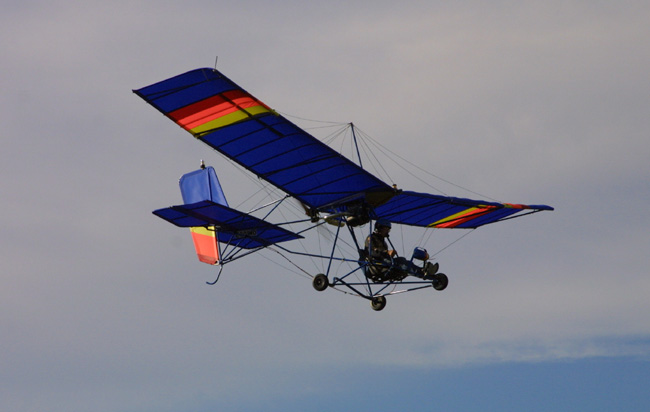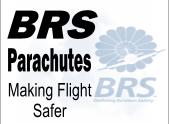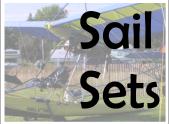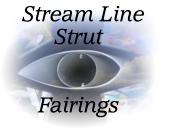|
The reason is
quite simple, the faster the craft is built and flying the sooner the
PROBLEMS , show up, allowing the factory to improve their product.
You can see that if it takes a year to build a craft, and another year to
put 50 hours on it, (before problems were reported to the factory) it
would be two years from delivery before the craft was IMPROVED, on the
assembly line.
In Canada the MX, and MX11 were probably the first ultralights to be used
for training new pilots. In the hay day of ultralight aviation 1981/83,
some schools in Canada were putting 50 to 60 hours week on their craft in
TRAINING.
When you put that kind of hours on a plane primarily designed for
recreational flight, it like an 18 year old working the street, starts to
show its age, very quickly.
In an effort to help smooth out some of the wrinkles on the old MX and
make it a little more respectable the following is a run down of some of
the problems and their possible solutions, encountered in the use of the
MX for training.
These problems may not show up at all on some craft because of the
different kind of demands put on it, while others might be a little closer
to the training environment than at first realized.
The problems areas are broken down
into .
1. Engine
2. Airframe
3. Drive train
4. Control system
5. Fabric
ENGINE
We will be discussing some of the problems associated with the engines
used on the MX, but it is suggested that you read Problem solving the 430
Cayuna R, and Troubleshooting the Rotax family of ultralight engines,
which if not published by this publication will be in the near future, or
by contacting Ultralight News,
for a full report on the problems encountered in the use of these engines
on various ultralights.
Whether using the Cayuna or Rotax engine use Premium unleaded fuel, with a
good grade of oil. When purchasing your gas buy it from a busy station,
mix 5 gallons at a time, or whatever you will be using, and under no
circumstances store premixed fuel in a bulk container, as it quickly
looses its octane rating.
Make sure that the spark plugs you are using are the kind recommended by
the manufacturer, and that they are properly gapped, prior to
installation.
Plugs should be inspected periodically replaced about every 25 hours, or
at the first sign of a miss), as should the fuel filter.
The air filter supplied by the manufacturer was a sponge filter which is
very prone to water absorption, and is not a filter that I personally
recommend.
A K & N airfilter
model RU 0600 has proven to work very effectively, and does not suffer
from the water draw back. A word of caution to owners who have installed
weight shift Quicksilver engines, into an MX frame. The fuel supply system
on most of the weight shifts were a GRAVITY FEED SYSTEM, the MX uses a
fuel pump, the carburetor needle and seat are DIFFERENT.
Also any owner who for one reason on another replaces his carburetor
should make sure that the carburetor is set up for a fuel pump.
Pilots flying Cayuna powered MXs have reported erratic engine performance,
engine overheating and engine seizures, and or lack of performance both on
the ground and in flight. Upon closer inspection it was found that the
rubber flange connecting the carburetor to the intake manifold had
partially separated, UNDERNEATH the worm drive clamp used to hold the
carburetor to the intake manifold.
The separation was not evident unless the pilot removed the carburetor
completely, and inspected the flange closely. In some cases pilots took
several months to locate the source of the problem.
The solution to the problem is to replace the carburetor mounting flange
with a new flange, and if at all possible support the back of the
carburetor so that the flange is not taking the complete weight of the
carburetor and breather.
Another commonly reported problem was improper ventilation of the gas
tank. In early model MXs the gas cap had a screw in vent on its top that
was used to vent the tank. If this vent was inadvertently left closed the
engine would run for a short while and them simply quit.
Later models eliminated the screw in vent, replacing it with a small hole.
This hole has been reported to become plugged, and should be an area of
periodic inspection.
Another reported problem is in the deterioration of the cork liner in the
cap. Apparently with time the cork liner rots and falls into the tank,
where it has the potential to clog gas lines, filters, or fuel pumps.
AIRFRAME
The airframe on the MX was made up of aircraft grade anodized aluminums
tubing and in most cases AN nuts and bolts. This made for a good reliable
low maintenance, combination.
That is it made a good combination if the pilot made perfect landings and
take offs, directly into the wind from a smooth runway, which
unfortunately was not always the case, in a training environment.
KING POST
One of the first problems encountered when abusing the MX was that of the
KING POST CHANNEL BRACKETS FAILING,
usually after a rough series of landings. In all reported cases that I
know of where this has happened the King Post remained upright, held by
the gas tank and sail.
The point of failure was at the bend in the channel bracket. In early 1984
if memory serves me correct the manufacturer did update their brackets to
a higher strength because of this problem. Thus if you have an MX prior to
84, it is suggested you check this area, and update immediately.
Another reported problem was that of customers in the field over
tightening the King Post. The proper way to tighten an MX King Post is to
bring it up snug, by hand, DO NOT USE VISE©GRIPS OR A PIPE WRENCH.
Some MX owners tried lubricating the threads on the king post, this
resulted in the king post backing itself down during flight, causing loose
flying wires and an improper angle of incidence to the tail, and in some
cases a loss of proper elevator control.
Another problem encountered due to hard landings was the bending of the
King Post. On some later model MX 11's the aluminum King Post was replaced
by a chromoly KING POST.
WIRE TANGS WIRE TANGS
Another problem area, located above the wing was in the tang used to
connect the King Post upper nose wire to the front of the root tube.
This tang was reported to crack at the bend. As well the bolt used to
retain the upper and lower nose wires was reported to have broken.
To help eliminate this problem it was suggested that the tang on the lower
nose wire be replaced with a double tang, with a larger bolt hole, which
used two separate wires for support, and that the upper tang be replaced
with a stronger tang drilled out, to allow the use of a 5/16" bolt rather
than the original 1/4"bolt.
ROOT TUBE ROOT TUBE
The manufacturers recommendation was to replace the root tube on the MX 11
every 200 hours, and on most other models at 300 hours. (A complete
maintenance schedule is available from any Quicksilver dealer, or parts
centre).
The areas of most concern involved:
1. The area where the King post channel bracket fastens to the root tube.
It was reported that the root tube was bending, or indenting immediately
below the channel bracket.
This could be caused by over tightening the king post, or by numerous hard
landings or a combination of the two.
2. The area where the leading and trailing edge channel brackets attach to
the root tube. This area was reported to show signs of wear and cracking,
as well as elongation of the holes.
In several cases in Canada it was reported on the MX 11 that the root tube
had SPLIT FROM THE LEADING TO TRAILING EDGE BOLTS , on one side of the
root tube. This must have happened during flight since a thorough
preflight was done prior to the planes taking off.
AXLE
The main axle on the MX proved time and again to be very forgiving. In
fact many pilots simply kept flying even when the main axle was bent.
This AXLE HAS BEEN REPORTED TO BREAK
, at the bolt which ‹ connects the lower tail wires to the axle, and/or
where rear down tubes connect to the channel bracket on the axle.
Several pilots have been in the process of taking off when the plane has
simply collapsed around them.
This is not something that happens overnight but is rather caused by hard
landings over a period of time. It is suggested that if your main axle is
bent that you replace it.
As well check the hole in the axle where the bolt holding the down tube
bracket to the axle is, elongation of this hole has also been reported.
TAIL BRACE AND CHANNEL BRACKET WEAR
Another area of reported wear is in the tail brace tube (40440). The wear
can be found in both the channel bracket and tube, at both ends, where the
tube rests in the channel bracket.
A simple solution to this is to install small plastic washers on both
sides of the tube, between the tube and channel bracket. This makes the
wear part the plastic spacer rather than the tube and bracket.
SEAT SUPPORT
The "U" shaped tube used to support the seat, located directly below the
seat, (seat mount assembly), was reported to fail (in early model MX's,)
at the point where the bolts go through to attach the seat belts, and
seat, to the "U" bracket.
Later models were strengthened in this area.
SEAT BREAKAGE
Another problem reported was the breaking of the seat, at ‹ its base. This
was caused by pilots restraining their aircraft during run up, while
seated in the craft, and applying pressure to the back of the seat to
prevent the craft from moving.
TRIBAR CROSS TUBE ASSEMBLY
On the tribar cross tube are located four channel brackets used to connect
the nose struts and axle struts to the assembly. Numerous pilots have
reported the bending of the flat plate which the channel brackets and flat
saddles bolt to, again caused by hard landings, usually by the nose wheel
hitting first.
The bolts used to connect these groups of brackets and saddles has also
been reported to bend and it is suggested that it be an area of regular
inspection.
It was also noted during the disassembly and reassembly of a damaged MX
that the TRI BAR CROSS TUBE ASSEMBLY WAS
BENT. This could only be noted by complete
disassembly, and the laying of the unit on a flat surface. It was also
noted prior to disassembly that the craft required considerable pilot
input to fly straight and level, while after replacement of the assembly
with a new unit it again flew as an MX should.
REAR DOWN TUBES
The rear downtubes on the MX have been reported to show elongation of the
holes where the top of tube fastens to the root tube. This elongation is
generally not visible unless the pilot removes the down tubes and examines
in behind the plastic saddle, which acts as a stand off from the root
tube.
Another wear point on the rear downtubes is on the tubes inner sides. This
wear is caused by the two tubes contacting the driveshaft coupler, or
coupler bolt.
Also if the pilot has updated to the flex drive coupler it is necessary to
reposition the rear downtubes in such a way as to clear the coupler. (For
more info contact a parts depot or service centre).
TENSION STRUTS
The MX has two suspension struts running from the axle to the nose wheel.
Elongation of the holes in these tubes has been reported, where the bolt
passes through a channel bracket, and then into the suspension strut,
immediately in front of the axle.
In training one of the first things many schools in Canada did was to
sleeve these tubes by riveting a short sleeve over the end of the tube.
As well many schools replaced the wing nuts and safety pins used here with
an AN self locking nut and bolt, and used a saddle between the channel
bracket and tube. This helped cut down on wear by eliminating some of the
movement allowed by the use of wing nuts.
TAIL SKID
Another tube which has shown to wear over time is the tail skid. The most
noticeable area of wear is on the area of the skid that comes in contact
with the ground. A simple solution is to over sleeve the tail skid with a
clear replaceable chunk of rubber hose. The tail skid has also shown wear
in the holes used to connect the tail skid to the horizontal stab, and
tail support.
This wear can be eliminated somewhat by the use of an AN bolt and self
locking nut, rather than the wing nut and safety ring supplied by the
manufacturer.
PIT PINS
All early model MXs came with pit pins for ease of assembly and
disassembly. These proved over the long run to be not as strong as an AN
bolt, or the stainless T pins which replaced them.
The original pins were known to bend, break, rust, and in some cases work
there way out of the channel brackets. It is highly recommended that if
your MX has these style of pins that they be immediately removed and
replaced with AN nuts and bolts or stainless T pins with lock rings.
NOSE STRUTS BOLTS
Attaching the tension strut to the nose strut on old style MXs are two eye
bolts, and an AN3 bolt. This eye bolt has been known to shear at the head.
When this happens it allows the tension strut to fall down. On takeoff it
can result in the strut digging into the ground, causing possible injury
to the pilot, and severe damage to the aircraft.
If the bolt breaks during flight the strut simply hangs down but is
generally bent beyond repair after being landed on.
The new MX Sprint features a bracket and bolt system that eliminates this
problem, and is adaptable to the MX.
COMPRESSION STRUTS
Several float plane pilots flying 503 equipped MXs with larger fuel tanks
have reported the bending of the compression struts on early models.
We were recommending the oversleeving of the compression struts to any
plane which might be subjected to heavier than normal loads.
WING WIRE E BOLTS
MX pilots have reported the BENDING AND OR FAILURE of the wing wire bolts
on the MX. During normal preflight they have been able to simply reach up
and remove the strut. To my knowledge none has ever fallen out during
flight.
It is suggested that this be a regular area of inspection, by all MX
pilots. Over the years two solutions have been suggested for this problem.
The first suggested solution was published in the EAA Light Plane World,
in their March 1985 issue. The author of the report was Graham Lee, of
Edmonton Alberta. I am sure that Mary Jones of EAA would be more than
happy to forward this information to you.
Or for another suggested solution contact Ultralight Systems Inc. Old
Airport Mines Road Laredo TX 78041, 512©725©9092.
WHEELS
Pilots have reported several problems with the wheels used on the MX.
In photo A the damage on the outer rim is caused by under inflation of the
tire and hard landings. The damage to the centre of the rim is caused by
excessive side loads on landing.
The damage in photo C was caused by excessive tire pressure.
The solution to this problem is to check your wheels during preflight for
any signs of abnormal wear. Also check your tire pressure on a regular
basis. To much pressure results in the rims breaking where the bolts
holding them together go. To little pressure results in the outer rim and
bearing areas being damaged.
Another problem is the bolts used to hold the two rim halves together will
back off allowing the tube to get pinched in the opening between the two
rim halves, resulting in a flat tire. Check these bolts during your
routine preflight.
Another frequently reported problem is in the loss of the whole wheel
assembly, sometimes on take off other times when the craft is in flight.
On the MX a pin with a safety ring, going through a short collar was used
to keep the wheel fastened to the axle. In long grass, or muddy conditions
the retaining ring can become damaged in such a way that it no longer
retains the pin and thus the collar is allowed to fall off, followed very
shortly by the wheel.
If your aircraft is equipped with a pin using a safety ring it is strongly
advised that you replace it with an AN bolt and self locking nut.
LOWER TAIL WIRE WEAR
It has been reported by several Quicksilver MX owners that during routine
preflight they have noticed abnormal wear on their lower tail boom wires,
where they come in contact with the tail boom support tubes, in some cases
the cables have sawed a hole through the tube, in other cases the lower
tail wire had started to fray.
The solution to the problem has been to rivet a cable guide or stand off
on to the lower boom tube, (This still allows the cable to move yet any
wear is in the plastic guide).
Another solution is to switch to the lower boom tube conversion kit which
stiffens up the tail and eliminates the lower wires. I personally prefer
the second alternative, and have found it well worth the money.
DRIVE TRAIN
ROOT TUBE BEARING WEAR
MX pilots have reported vibration in their aircraft, upon further
examination it was found that a collar inside the root rube which the top
pulley shaft goes through had begun to wear, allowing the bearing which it
retains to move causing the vibration.
It was generally found that all these aircraft had more than 100 hours on
them.
A solution to the problem is to drill a hole through the root tube
directly in front of the bolt that holds the collar and install another
bolt. What this does is holds the collar in place and takes the strain off
of the bearing and collar, by giving support to the collar at two
locations instead of one.
Of course if you have already started to feel the vibration then the
bearing is probably gone and must be replaced.
There is also a retrofit available which replaces the round bearing
retaining collar with a new solid aluminums insert which fits snugly into
the root tube, and which has a drilled out section for the bearing to fit
into eliminating the need to drill the second hole.
Another option available is put out by Ultralight Systems, this calls for
the replacing of the shaft and pulley and bearing, with a solid shaft with
the bearings moved out into the large reduction drive, pulley for more
information contact them at 512©725©9092.
Other parts can be obtained from LEAF, QUICKSILVER & GLIDER EXCHANGE, OR
WINDSTAR AVIATION, or any authorized Eipper dealer.
PILLAR BLOCK BEARING
MX pilots have reported that the pillar block bearing used to tension the
belts on the back end of the driveshaft has
1. seized up
2. worn into the driveshaft 3. become worn out.
It is suggested that this be a regular area of inspection and that at the
first sign of wear, that this pillar bearing be replaced.
DRIVE SHAFT COUPLER
Several ultralight pilots have reported loss of propulsion both on the
ground and in the air. Upon closer examination it was found that the
coupler connecting the driveshaft to the engine had broken in half.
In several other cases the bolt connecting the shaft to the coupler had
severed. The bolt severing incidence were generally after the craft had
been flown for 50 or 60 hours with an untraceable vibration, generally at
idle and around 5,000 RPM.
A possible solution to this problem is to replace the coupler with a new
style which is nearly twice the diameter plus substantially longer. (these
are generally found on the newer Rotax powered aircraft).
Another solution is to replace the coupler with a flex drive coupler,
which eliminates most vibration.
Another problem encountered with the coupler is that of the bolt retaining
the coupler to the crankshaft coming loose or, if removed not being
properly tightened, when reinstalled.
This allows the coupler to spin on the crankshaft, generally ruining the
coupler. A pilot with a loose bolt will notice his engine revving up while
under load, similar to what would happen if his drive belts were loose.
Another area of slippage is on the two seat MX on the large reduction
drive pulley. On the side of the pulley are located two bolts for
tightening the pulley on to the upper driveshaft.
The manufacturer recommended that loctite be applied between the pulley
and shaft and then that the bolts be tightened this helps prevent the
pulley from turning on the shaft. On two seat aircraft the bolts were and
AN 5 rather than the AN 4 used on the singles.
The manufacturer also changed the kind of driveshaft they were using from
a hollow shaft with an aluminums plug to a solid shaft, for more
information on this you could contact any of the above service outlets.
CONTROL SYSTEM
RUDDER
It has been reported by several MX pilots that the rudder frame (part no
40333) has hooked up on the upper tail wires, in most cases the aircraft
had over 150 hours on them and the king post had been adjusted to or near
the maximum allowable.
The entanglements have been reported, on the ground during a take off run,
on a rough field, and in the air, in turbulent flying conditions.
When the frame was supplied from the factory it was usually longer than is
necessary, and this could contribute to the problem.
If you are flying an MX we strongly advise you check to make sure that
your rudder frame can not come past the upper tail wires, and that your
rudder frame is cut off flush with the bottom of the tension strut on the
rudder.
Also the retrofit tail boom kit has been found to help eliminate this
problem.
SPOILERON HORNS
Early model MXs used a plastic tab to deploy the spoilers, these required
considerable amounts of pressure to engage and generally just ended up
stretching the deployment lines.
Later models used a horn which worked well and allowed full deflection of
the spoilerons.
Another problem with early MXs was in the use of plywood to make the
spoileron plates. These ended up rotting, or buckling over time. Later
models used a bevelled aluminums plate.
WING BATTENS
Early model MX instruction manuals came with instructions which told
owners to install their battens with the plastic retaining tips so that
they came out on the top of the wing.
Pilots flying with them in this position found that the battens backed out
of their pockets and in some cases into the prop.
Later manuals had the owners turning the tips so that they exited the
underside of the wing, and were held in place by air pressure and the
trailing edge.
Owners who have installed their battens the other way who didn't want to
change simply drilled holes in the tips and tie wrapped them in. This
worked well although in many cases the tips simply broke off where the
holes had been drilled.
It was also recommend that MX owners make a pattern from a new batten and
then on a yearly basis check and rebend any battens that require it, to
the shape of the new one. This can be done very easily using two pieces of
plywood, the first as a base, the second the shape of the batten.
When rebending the batten simply lock it in place between two pieces of
wood, at its leading edge, and carefully rebend it around the pattern.
MOTOR MOUNTS
Several pilots flying Cayuna powered MXs with the motor mount arms shown
in this picture have reported the arms breaking where the bolts go through
to retain it to the motor, and or root tube bracket.
If you are flying on this style of mount it should be an area of regular
preflight, and or update to the mount used on the Rotax powered MXs which
to date have not been reported to have this problem.
GAS TANK GROMMETS
Several MX pilots have reported loss of fuel, both on the ground and in
air. Upon closer inspection it was found that the rubber grommets used to
seal the gas tank where fittings are placed to supply fuel, had rotted and
then cracked allowing fuel to escape. In other cases the sharp edges of
the plastic tank had actually cut into the grommets again resulting in
leakage.
The solution to this problem is to
1. round the inside corners of the holes that the grommets fit in.
2. replace the grommets yearly, or at the first sign of deterioration or
leakage.
NOSE WIRE BREAKAGE
It has been reported by several MX owners that the nose wire located at
the front of the root tube and running down to the triangle bar has
snapped on landing. This usually causes the A frame to collapse around the
pilot.
A possible solution to this problem is to replace the single wire, and
tang, with the new style double wire and tang shown in the attached photo.
SADDLES
The MX used several different sizes of saddles throughout its airframe.
These saddles were generally used to help eliminate wear and tear on
parts, by preventing them from rubbing against each other.
Pilots have reported that these saddles have broken causing improper
spacing, and or wear on parts.
An area in which these saddles are located, which is critical to the
flight characteristics of the MX is in the area of the horizontal
stabilizer.
If the saddles break in this
area it causes the horizontal stab to flutter, in flight, which can be
very disconcerting to the pilot. Also the horizontal stab is used to
determine the correct angle of incidence from the tail to the wing, and
the loss of these saddles can result in control problems.
This is an area that should be regularly inspected and if any saddle is
found to be cracked or cracking it should be immediately replaced.
Another problem recently encountered on the MX is that of the fabric on
the horizontal stabilizer becoming very loose. This generally results in
the aircraft flying with a nose high attitude. If the fabric on your craft
is loose it can be tightened somewhat by using a hot iron and passing it
carefully and quickly over the fabric.
If this does not work the fabric should be replaced, or the tail section
updated to the new style which features a leading edge tube which joins
back up to the trailing edge of the horizontal stab.
FABRIC
The fabric used on the MX was Dacron Sailcloth. This material is very
susceptible to UV light. Even if a pilot stores his plane inside, or uses
wing covers the flying surfaces are still exposed to UV when flying.
Tests have shown that the fabric can loose its strength in as little as 6
weeks in some regions of the country. To date I have found only two
products effective in helping prevent UV degradation.
They are Stits Aerothane, and EXTERIOR HOUSE PAINT. These coatings have
extended fabric life from 1 to 8 years on craft located from Florida (1 &
2 years) to Ontario (8 years), when the planes have been left outside most
of the time.
Check out
UV
Protection
Either process can be applied by gun, brush, or roller, with the gun doing
the best job. The coatings are all very toxic to use and should be applied
only after reading and following the instructions very carefully.
Well its taken some 3 months, and 5 rewrites to get this all down on
paper, I hope that it is of some use to fellow MX owners and pilots.
U.B. Judge |







